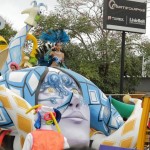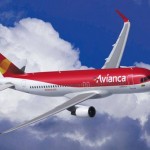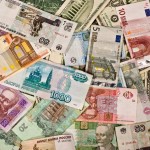The national symbols intend to represent the Colombian identity by creating visual, verbal cultural iconic representations of the national people, values, goals, and history.
The National symbols of Colombia are the symbols which represent the national identity of the Republic of Colombia as a sovereign state. The national symbols intend to represent the Colombian identity by creating visual, verbal cultural iconic representations of the national people, values, goals, and history.
These symbols are often rallied around as part of celebrations of patriotism and are designed to be inclusive and representative of all the peoples of the national community.
National flag
The Colombian flag was defined in 1934 by the Decrees 861 of 1934, expedited by the Government of Colombia during the presidencies of General Pedro Nel Ospina and Enrique Olaya Herrera.
As defined in the Constitution of Colombia Decree number 861 of May 17, 2014 in Article 1, the pavilion, flag and standard of the Republic of Colombia is composed by the yellow, blue and red colors distributed in three horizontal stripes. The yellow top stripe is positioned in the upper area of the flag and has a width of half of the entire flag horizontally. The other two stripes the middle blue and the bottom red will each be a fourth of the total area of the flag. The yellow color represents Colombia’s gold and natural wealthiness; the blue color represents the two oceans that border Colombia, the Pacific and Atlantic oceans, rivers and the sky; The red color represents the blood of the patriots that fought against the Spanish monarchy to gain the independence of Colombia. Authorized variations of the Colombian flag also represent the merchant flag of Colombia, the War flag of Colombia exclusively used by the Colombian Army. The flag with the Colombian coat of arms is of exclusive use of the armed institutions of Colombia.
Coat of arms
The coat of arms of Colombia is divided into three horizontal stripes: the upper band, on a blue field, has in the center a golden pomegranate red open grained, with stem and leaves of gold. On each side of the pomegranate is a cornucopia of gold inclined, pouring coins into the center of the right side, and proper fruits of the torrid zone the left side. The grenade denotes the name he bore this republic, and cornucopias, its rich mines and the fertility of their land. All environmental, platinum field, has in its center a Phrygian cap horned into a spear, a symbol of freedom, (Platinum, precious metal, typical of our country). At the lower end is the Isthmus of Panama was part of Colombia in the past, with its two adjacent seas wavy silver, and a black ship, under sail in each. This El condor symbolizing freedom. From its peak hangs a green laurel wreath and flowing ribbon, grabbed the shield and woven into the crown, is read on gold with black letters: Freedom and Order. Four horns arising inclined shield (two on the right and two to the left) hang four national flags surrounding Flags are linked at the bottom.
National tree
The wax palm tree Ceroxylon quindiuense, is a palm native to the Andean high altitude Cocora valley in the department of Quindío, northwest Colombia. Also known as the Quindío wax, the wax palm is the tallest palm tree in the world.
National flower
The national flower of Colombia is the orchid Cattleya trianae which was named after the Colombian naturalist José Jerónimo Triana. The orchid was selected by botanist Emilio Robledo, in representation of the Colombian Academy of History to determine the most representative flowering plant of Colombia. He described it as one of the most beautiful flowers in the world and selected Cattleya trianae as National symbol.
Tours & Tickets in Colombia
| COLOMBIA TRAVEL GUIDE |
| Related Articles |
If you’re travelling to Colombia, we help you:

![]() General Information About Colombia: National symbols of Colombia – Colombia: living history – Geography of Colombia – Economy of Colombia – Languages of Colombia
General Information About Colombia: National symbols of Colombia – Colombia: living history – Geography of Colombia – Economy of Colombia – Languages of Colombia
![]() Practical information about Colombia: Climate – How to get to Colombia – Visa, Customs, Documentation and Taxes – Embassies and consulates in Colombia – Health and vaccination – Emergency numbers – Culture of Colombia – Measures and Electricity – Currency of Colombia
Practical information about Colombia: Climate – How to get to Colombia – Visa, Customs, Documentation and Taxes – Embassies and consulates in Colombia – Health and vaccination – Emergency numbers – Culture of Colombia – Measures and Electricity – Currency of Colombia
![]() Tourist Information about Colombia: General Information – Practical information about Colombia – Adventure Colombia – Hotels and accommodations in Colombia – How to Get to Colombia – Gastronomy in Colombia – Colombia’s Best Festivals and Carnivals – Tourist Attractions in Colombia – Foreign Embassies and Consulates in Colombia – Tips and advice for travel in Colombia – Top 10 Colombian Travel Destinations – Natural regions of Colombia – Cultural Tourism in Colombia – UNESCO Intangible Cultural Heritage Lists – UNESCO Heritage Sites in Colombia – Top 10 amazing places to visit in Colombia – Colombian Cuisine – Tourism of Nature
Tourist Information about Colombia: General Information – Practical information about Colombia – Adventure Colombia – Hotels and accommodations in Colombia – How to Get to Colombia – Gastronomy in Colombia – Colombia’s Best Festivals and Carnivals – Tourist Attractions in Colombia – Foreign Embassies and Consulates in Colombia – Tips and advice for travel in Colombia – Top 10 Colombian Travel Destinations – Natural regions of Colombia – Cultural Tourism in Colombia – UNESCO Intangible Cultural Heritage Lists – UNESCO Heritage Sites in Colombia – Top 10 amazing places to visit in Colombia – Colombian Cuisine – Tourism of Nature
![]() Travel Guide of Colombia: Colombia Travel Guide – Amazonas – Antioquia – Arauca – Atlántico – Bolivar – Boyacá – Caldas – Caquetá – Casanare – Cauca – Cesar – Chocó – Córdoba – Cundinamarca – Guanía – Guaviare – Huila – La Guajira – Magdalena – Meta – Nariño – Norte de Santander – Putumayo – Quindio – Risaralda – San Andrés y Providencia – Santander – Sucre – Tolima – Valle del Cauca – Vaupés – Vichada
Travel Guide of Colombia: Colombia Travel Guide – Amazonas – Antioquia – Arauca – Atlántico – Bolivar – Boyacá – Caldas – Caquetá – Casanare – Cauca – Cesar – Chocó – Córdoba – Cundinamarca – Guanía – Guaviare – Huila – La Guajira – Magdalena – Meta – Nariño – Norte de Santander – Putumayo – Quindio – Risaralda – San Andrés y Providencia – Santander – Sucre – Tolima – Valle del Cauca – Vaupés – Vichada
Flights, Cheap Airfare Deals & Plane Tickets |





















JohnathMarch 5, 2021
Very well worded!